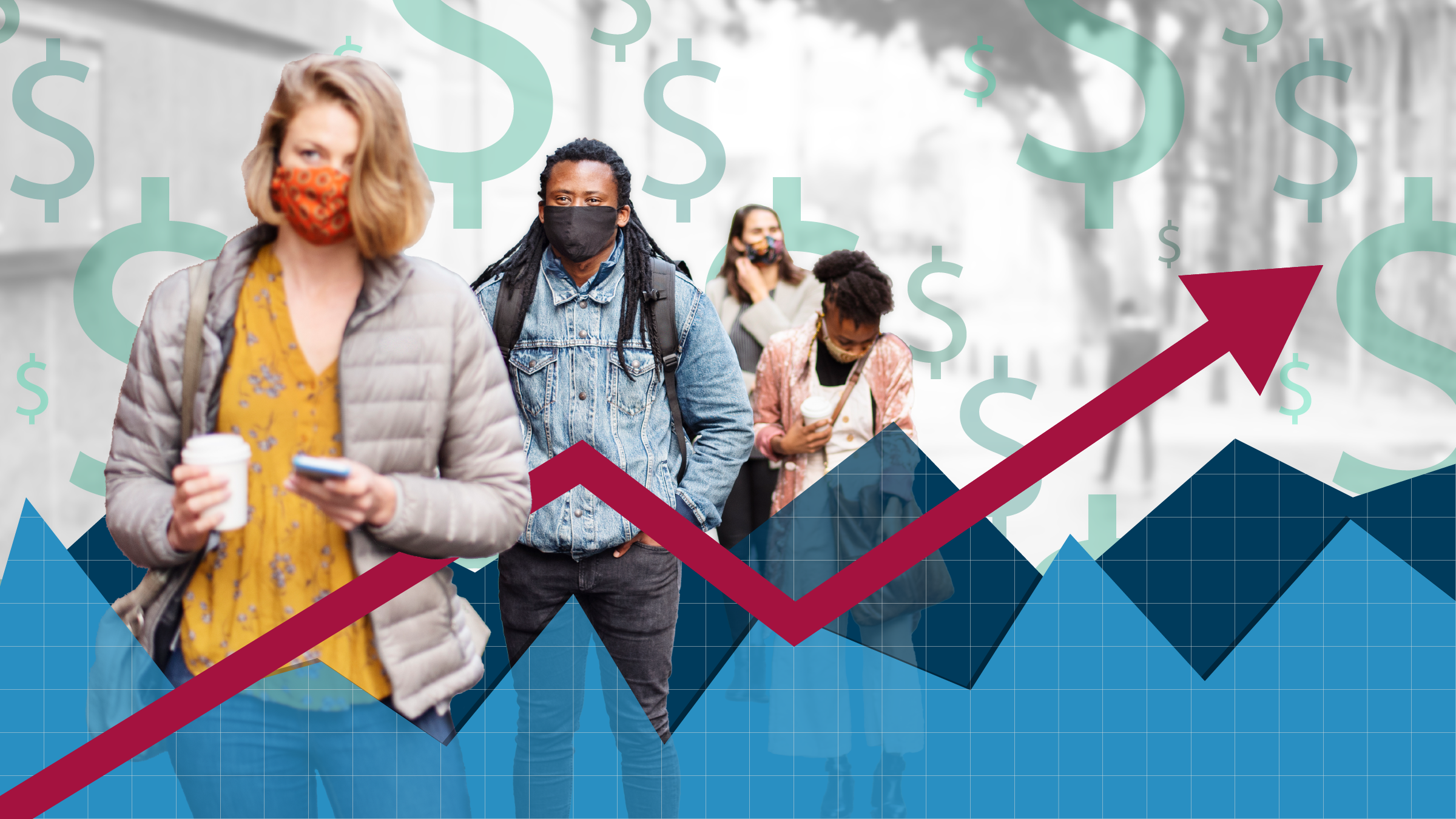In a recent article, I took a first look at the “disparate inflation” research that arose amid the recent surge in inflation. The fastest price growth in 40 years inspired economists in academia and at the New York Fed, U.S. Bureau of Labor Statistics (BLS), and U.S. Census Bureau to generate new datasets tracking how inflation affects different groups of Americans.
In that prior piece I focused on different income groups, including the finding that, on average, inflation for low-income households appears to run about 10 percent higher than aggregate inflation (and ran about 8 percent higher since the onset of the COVID-19 pandemic). I also showed that relative inflation can vary across groups from moment to moment, as strong price increases in some categories of goods and services hit harder for different family budgets. For example, lower-income consumers tend to spend relatively more on housing; middle-income households more on cars and gas.
Here I’ll call out some of the notable insights from slicing and dicing the inflation experience along other demographic dimensions such as age, race, and even whether kids are in the household. As with the income-based inflation data, one caveat is important at the outset: Tremendous heterogeneity exists within groups. That is, prior research has found that even demographically similar households can experience vastly different prices based on preferences and shopping habits.
Higher prices for the young, more stress for the middle aged
The New York Fed’s Equitable Growth Indicators (EGIs), launched in 2023, find that different age groups experienced similar inflation rates before the pandemic, when inflation was low and stable. As prices began to rise in 2021, so did the gaps between baskets of goods consumed by younger, middle-aged, and older consumers (Figure 1). Young adults generally experienced the highest inflation, while the annual inflation rate for older adults ran more than 2.5 percentage points lower.
However, the price of a statistical basket of goods might not align with the psychological toll taken by inflation. Different stages of life feature different financial obligations, pressures, and household structures.
At the peak of inflation in summer 2022, the Census Bureau added new questions about prices to its Household Pulse Survey, which was launched near the onset of the pandemic. The survey has continued to ask those questions, and here’s how things look by age as of September 2024 (Figure 2).
While older adults on a fixed income are commonly evoked in the media to dramatize high inflation, they appear to be the least stressed by prices. (Notably, Social Security payments are re-indexed each year to reflect changes in the consumer price index.) And despite facing lower inflation rates in recent years, people between 25 and 54 are just as stressed as young adults.
That age range aligns with prime parenting age. Could inflation be adding one more dimension in which kids stress parents out? Indeed, the Household Pulse Survey shows more than half of people with children at home find rising prices “very stressful,” even after inflation rates have fallen dramatically (Figure 3).
Higher inflation for older adults over time?
In my prior article focused on income groups, we got a longer view from a new BLS research data series that looks retroactively back to 2005. For other demographic angles, however, our view is restricted to the past few years.
The exception—the granddaddy of disparate inflation data, you might say—is the BLS’ consumer price index (CPI) for Americans 62 years of age and older. The R-CPI-E (the “R” stands for research; the “E” originally for “elderly”) began after an order from Congress in 1987 and looks back to 1983.
During the recent bout of inflation (2021–2023) the R-CPI-E nets out nearly the same as average headline inflation (the CPI-U). Across the full 40-year span of the data, however, inflation for older adults runs slightly hotter: 3 percent annual inflation, on average, versus 2.8 percent.
As always, the difference depends on different consumption baskets. The cost of medical care has more than quintupled since 1983, growing almost twice as fast as the overall price level. The BLS calculates that people 62 and older devote 11 percent of spending to medical care, while the general population devotes 8 percent. Figure 4 shows basket-share differences between older adults and the general population, and the price changes for those categories over the past 10 years.
Older adults also spend considerably more on housing (49 percent versus 45 percent for the general population). They spend relatively less in other major categories, including food and transportation, that had lower rates of inflation than medical care and housing.
Initial findings on inflation by race
As with its breakdowns by income and age, the New York Fed’s EGI inflation indicators by race primarily diverged only when overall inflation took off (Figure 5).
In a recent interview, New York Fed economist Rajashri Chakrabarti told me the transportation component of the basket was a significant factor that drove inflation for Hispanic households more than 1.5 percentage points above average. As vehicle and gas prices normalized, housing inflation became the more important factor, with a disproportionate effect on Asian households. But by mid-2023, the differences by race were again small.
The New York Fed also deflates each group’s weekly earnings by its respective inflation rate. This shows that after all the fluctuations in recent years, earnings adjusted for inflation have taken a slight step backward from pre-pandemic across the board (Figure 6). And there has been little change in the relative inequality across the groups.
The latest reading on inflation stress from the Census Bureau’s Household Pulse Survey shows minimal variation by race. About half of White, Hispanic, Black, and mixed- or other-race respondents are still “very stressed” today by price increases. Only Asian Americans are somewhat less stressed—not surprising given their higher relative income.
Price volatility: Another form of disparate inflation?
When I searched for relevant research at the outset of the inflation surge in late 2021, I encountered work by Claudia Macaluso and Felipe Schwartzman of the Richmond Fed and Munseob Lee of U.C. San Diego. The economists are working to understand the different inflation experiences of Black and White households with a particular focus on volatility—how frequently the prices of items in the consumption basket change.
In a blog post for the Richmond Fed, Lee summarized their finding that although Black and White households have a fairly small difference in their inflation rates, “Black households faced 13.5 percent higher inflation volatility, making it more difficult to predict and recalibrate their consumption and savings.”
Most of the difference arises because items with frequent price swings—such as food and energy—generally comprise a larger proportion of Black household consumption. The average White household basket contains relatively more items with stickier prices, especially luxury items and services (one example they use is pet care).
Beyond changes in the price level, “price volatility makes it difficult for households to evaluate how much their money will buy from period to period,” Lee wrote. “The typical Black family also does not have enough savings to avoid costly borrowing or missed payments when unexpected events arise, which makes them especially vulnerable to inflation volatility.”
Men, women, and rural shoppers
While researchers have not yet developed his and hers CPI baskets, the Household Pulse Survey has been tracking differences in stress levels based on sex. Women, they find, are more stressed by price increases than men: As of July, 75 percent of women report feeling “very” or “moderately” stressed versus 68 percent of men.
I’ll wrap up with one last eye-catching finding from the New York Fed’s EGIs. It is not possible to draw broad conclusions from the limited five-year data period. But in recent years, at least, the goods and services basket for rural residents seems to run below the urban average in normal inflationary times. However, rural inflation surged far above city dwellers during 2021–2022 (Figure 7).
As with other demographic categories, it is a reasonable hypothesis to connect this run-up to rising transportation prices. The average rural resident drives 76 percent more than an urban one (30 miles a day versus 17 in 2022—although city drivers not surprisingly spend more time in the car). Housing and rent prices are lower in rural areas, which helped rural inflation fall rapidly and settle below average by 2023 as more persistent housing inflation hit urban residents harder.
It is early days for this data. From the Fed to BLS to Census Bureau to other now-and-future economists, the highest inflation in many years has launched a conversation: Clearly inflation—like the Fed’s other congressionally mandated focus, employment—is not a one-size-fits-all data point. In an era when the “heterogeneous” impacts of monetary policy have entered the mainstream of economic research and modeling (a trend I covered more broadly in a recent piece for our For All magazine), the new disparate inflation data will help policymakers better understand how economic actions and events play out across a diverse nation.
Jeff Horwich is the senior economics writer for the Minneapolis Fed. He has been an economic journalist with public radio, commissioned examiner for the Consumer Financial Protection Bureau, and director of policy and communications for the Minneapolis Public Housing Authority. He received his master’s degree in applied economics from the University of Minnesota.






